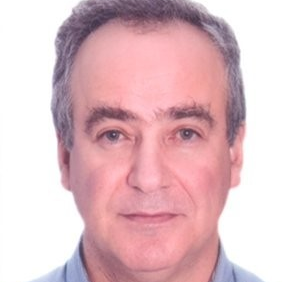Modern Circuits and Systems Technologies on Electronics
A special issue of Technologies (ISSN 2227-7080). This special issue belongs to the section "Information and Communication Technologies".
Deadline for manuscript submissions: closed (1 November 2018) | Viewed by 40594
Special Issue Editors
Interests: analysis and design of digital circuits and systems; power consumption modeling; timing analytical models for digital circuits; leakage detection and localization in metallic pipelines
Special Issues, Collections and Topics in MDPI journals
Interests: analog and mixed signal design and testing
Special Issues, Collections and Topics in MDPI journals
Special Issue Information
Dear Colleagues,
The 7th International Conference on Modern Circuit and System Technologies on Electronics and Communications (MOCAST 2018) will take place in Thessaloniki, Greece, 7–9 May, 2018. The MOCAST technical program includes all aspects of circuit and system technologies, including modeling, design, verification, implementation and application. This Special Issue aims at publishing extended versions of top-ranked papers at the conference. This year, MOCAST is technically sponsored by IEEE. The topics of MOCAST include:
- analog/RF and mixed signal circuits
- digital circuits and systems design
- nonlinear circuits and systems
- device and circuit modeling
- high performance embedded systems
- systems and applications
- power management
- imagers, mems, medical and displays
- radiation front ends (nuclear and space application)
- education in circuits, systems and communications
Prof. Dr. Spiros Nikolaidis
Dr. Alkiviadis Hatzopoulos
Guest Editors
Manuscript Submission Information
Manuscripts should be submitted online at www.mdpi.com by registering and logging in to this website. Once you are registered, click here to go to the submission form. Manuscripts can be submitted until the deadline. All submissions that pass pre-check are peer-reviewed. Accepted papers will be published continuously in the journal (as soon as accepted) and will be listed together on the special issue website. Research articles, review articles as well as short communications are invited. For planned papers, a title and short abstract (about 100 words) can be sent to the Editorial Office for announcement on this website.
Submitted manuscripts should not have been published previously, nor be under consideration for publication elsewhere (except conference proceedings papers). All manuscripts are thoroughly refereed through a single-blind peer-review process. A guide for authors and other relevant information for submission of manuscripts is available on the Instructions for Authors page. Technologies is an international peer-reviewed open access monthly journal published by MDPI.
Please visit the Instructions for Authors page before submitting a manuscript. The Article Processing Charge (APC) for publication in this open access journal is 1600 CHF (Swiss Francs). Submitted papers should be well formatted and use good English. Authors may use MDPI's English editing service prior to publication or during author revisions.
Keywords
- electronic circuit technologies
- electronic system technologies
- modeling, design and implementation of circuits and systems
- systems and applications
Related Special Issues
- Modern Circuits and Systems Technologies on Communications in Technologies (6 articles)
- MOCAST 2019: Modern Circuits and Systems Technologies on Electronics in Technologies (13 articles)
- MOCAST 2020 in Technologies (3 articles)
- MOCAST 2021 in Technologies (13 articles)
- Modern Circuits and Systems Technologies (MOCAST 2024) in Electronics






